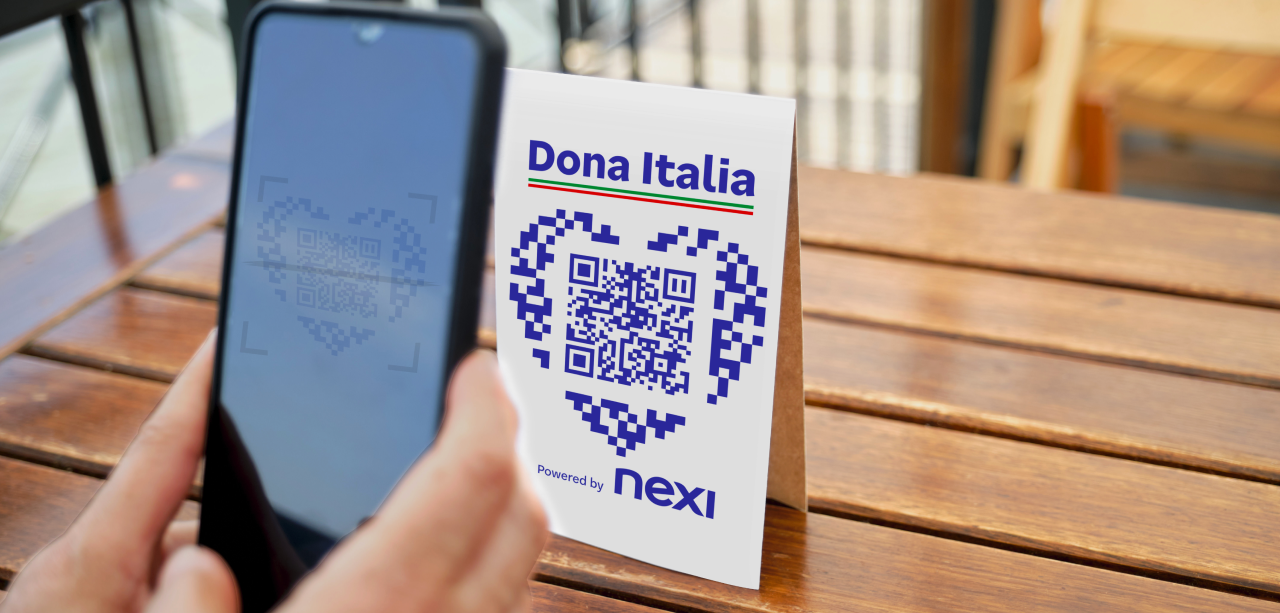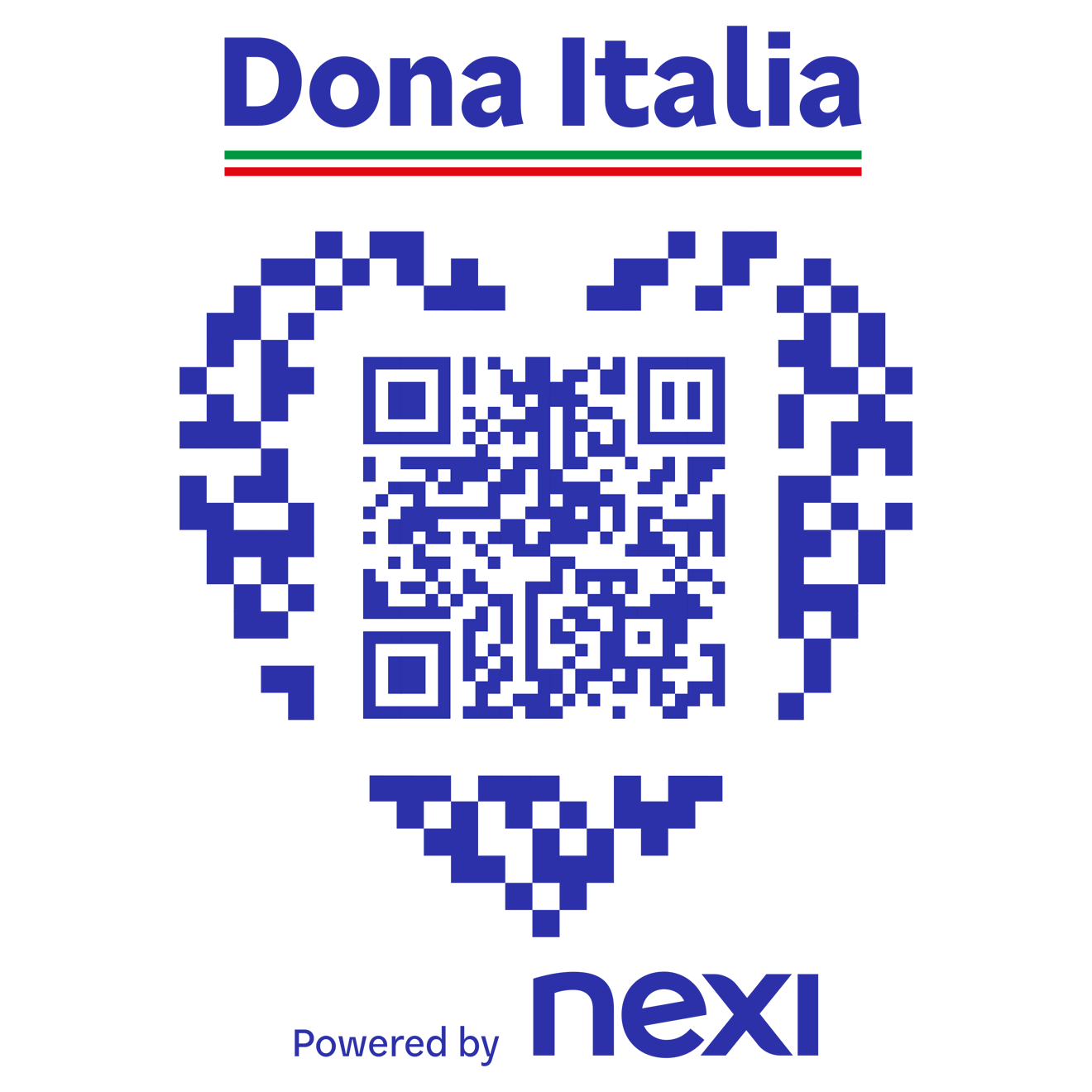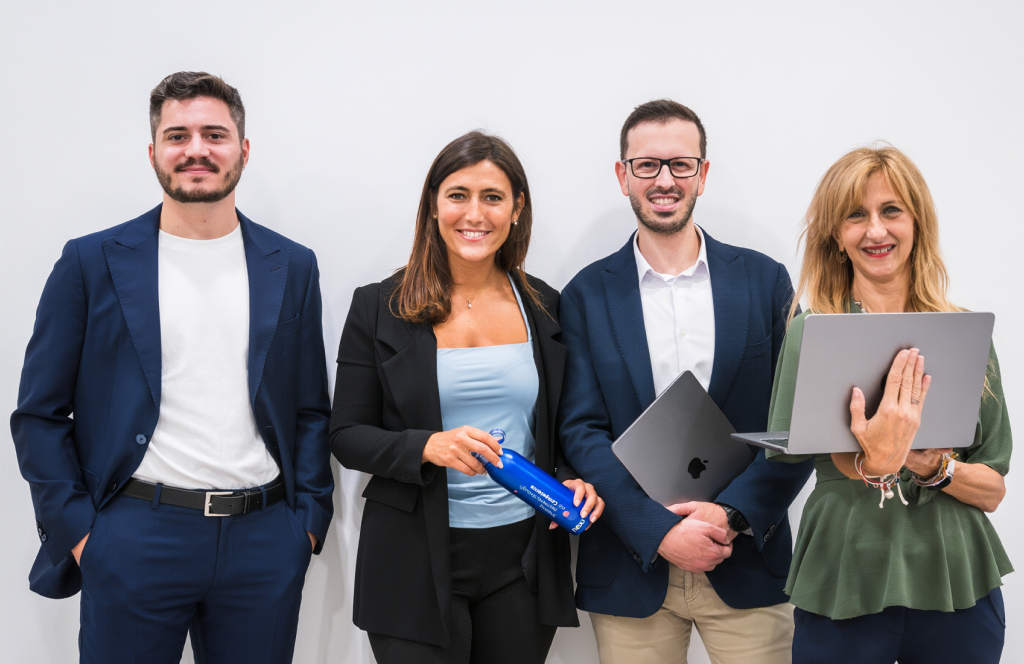
The European PayTech introduces the Heart-Shaped QR Code. A new, simple and secure way to donate
Rome, Italy, Biblioteca della Camera dei Deputati Nilde Iotti – Sala Refettorio – This morning, Nexi unveiled Dona Italia, a heart-shaped QR code designed to make donating easier, through an innovative, secure, and accessible digital tool available to all organisations in the Non-Profit Sector.
The launch event also served as an opportunity to present and discuss the results of a study on digital fundraising, conducted by Nexi in collaboration with the Osservatorio sul Dono of the Istituto Italiano della Donazione (IID). The survey offers a clear snapshot of the current state of digital donations in Italy, highlighting key trends, persistent barriers, and the opportunities that lie ahead for greater digital adoption.
“At Nexi, we’ve always supported the digitalisation and expansion of payment systems in Italy, with the strong belief that they are a key driver of both economic and social development,” said Paolo Bertoluzzo, CEO of Nexi Group. “For this reason, we’ve chosen to put our expertise and technology – as a European leader – at the service of the digital transition of the Non-Profit Sector, which represents the fourth largest contributor to Italy’s economy after Industry, Commerce, and Public Administration. With Dona Italia and its heart-shaped QR code, we’re offering Italians – and Non-Profit Sector organisations, especially the smaller and less digitally equipped ones – an innovative solution that makes donating easier and safer. Dona Italia is not just a tech project leveraging our know-how and investment; it’s a concrete contribution to the culture of giving, the growth of the Non-Profit Sector, and ultimately, to social progress in our country.”
A Sector Evolving Slowly
The IID survey shows that between 2008 and 2023, the number of donors in Italy fell by 10%. This clear decline signals that the Non-Profit Sector must adopt simpler and more immediate fundraising methods that align with the digital habits of today’s citizens. In fact, 29% of those interviewed said they would be more likely to donate if organisations offered digital donation options.
Despite digital payments overtaking cash in transaction value for the first time in Italy in 2024, the Non-Profit Sector still relies heavily on physical currency: at in-person events, 43% of donations are still made in cash, compared to 21% via POS or smartphone, and 17% using online payment methods.
Yet there are encouraging signs: 53% of respondents have already donated using digital tools, valuing their convenience, speed, and security. Additionally, 42% appreciate the traceability of digital donations, which simplifies tax deductions and credits.
However, among the over 126,000 Non-Profit Sector organisations registered with the Registro Unico Nazionale del Terzo Settore (RUNTS) – most of which have annual revenues under €200,000 – digitalisation remains limited. Smaller organisations, in particular, often lack the technical skills and resources needed to manage reliable digital fundraising tools. According to the survey, the biggest barriers to overcome are the lack of knowledge about available digital tools (73% of organisations expressed a need for training and support) and the complexity of current systems (22% said simpler digital procedures are needed).

Dona Italia
In response to the evident delay in the digital transformation of much of the Non-Profit Sector, Nexi – as a leading PayTech in Italy and Europe – has committed to developing new, innovative technologies that align with citizens’ everyday payment habits and make donating easier. This, in turn, helps Non-Profit Sector organisations strengthen their fundraising initiatives.
With Dona Italia, Nexi is launching a heart-shaped QR code with broad potential for use. It can be applied across all communication channels used by Non-Profit Sector organisations – from print and TV campaigns, to street fundraising events, websites, brochures, and branded merchandise.
While QR codes are already widely recognised by Non-Profit Sector organisations, they are mainly used to redirect users to websites or provide information about donation campaigns. Dona Italia, however, offers a direct and seamless donation experience – and 80% of survey participants said they would be happy to use it.
How Dona Italia Works
It’s very straightforward: users simply scan the heart-shaped QR code with their smartphone, access the organisation’s profile on Nexi’s platform, follow a few simple instructions and complete a secure donation within seconds. Multiple popular online payment methods are accepted.
All organisations registered with RUNTS – and therefore overseen by the Consiglio Nazionale del Terzo Settore, part of the Ministry of Labour and Social Policies – can access the service. As with any payment system, Nexi will carry out the necessary regulatory checks for Anti-Money Laundering, Data Protection and Compliance purposes before onboarding.
Even smaller organisations without an e-commerce platform can access the service at no additional technological cost, as Dona Italia is fully integrated with Nexi’s platforms.
Beyond developing and providing the technology and platform, Nexi will also cover all service costs during the launch phase to encourage widespread adoption. After this promotional period, Nexi will continue to absorb its own operating costs, while circuit and interchange fees will remain the responsibility of the organisations. To further support Dona Italia, Nexi will also involve its network of partner banks in scaling the initiative nationwide.
After an initial pilot phase already underway with several partners, Dona Italia will be available to all RUNTS-registered organisations from October. Full details and an activation form are available at Nexi.it/Dona Italia.
The Non-Profit Sector: Best Practices and Emerging Needs
The launch concluded with a roundtable discussion featuring key figures from leading Non-Profit Sector organisations, including: Daniele Finocchiaro, Executive Director, AIRC, Mariavittoria Rava, President, Fondazione Francesca Rava, Giorgio Righetti, Director General, ACRI
“For AIRC, the digitalisation of donations is a strategic goal. We’ve been working on it for over two years, and have now implemented dedicated tools,” said Daniele Finocchiaro Executive Director, AIRC. “Our partnership with Nexi – supported by Intesa Sanpaolo – began with our recent Azalea della Ricerca campaign, using POS devices, and is proving essential for advancing digital donations across the 4,000 locations where our volunteers operate.”
“As we mark the 25th anniversary of the Francesca Rava Foundation – NPH Italia ETS, we are proud to once again join forces with Nexi in a practical, innovative partnership that uses technology to serve solidarity,” said Mariavittoria Rava, President, Fondazione Francesca Rava. “The heart-shaped QR code, also created for our upcoming anniversary event at Milan Cathedral on 1 October, will help support the intensive care unit at the NPH Saint Damien Children’s Hospital in Haiti, which saves over 80,000 young lives each year.”
“Third Sector organisations are natural partners of foundations of banking origin,” commented Giorgio Righetti Director General, ACRI. “Together – through their respective strengths and values – they work to strengthen communities through solidarity, inclusion, social cohesion and knowledge. Innovative tools that help organisations simplify and accelerate fundraising efforts are therefore more than welcome.”
“With this project, Nexi reaffirms its commitment to putting technology at the service of inclusion, transparency and efficiency,” concluded Marcello Sala, Chairman of Nexi. “Our aim is to support Third Sector organisations in adopting simple, secure, and accessible digital solutions that increase their impact and operational capacity. Nexi is a strategic national infrastructure, serving not only the economy but also the sectors that form the backbone of Italy’s social cohesion and sustainable development.”


